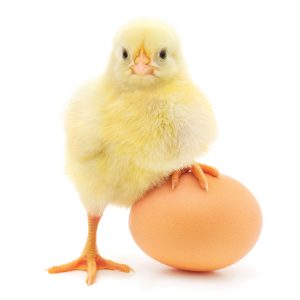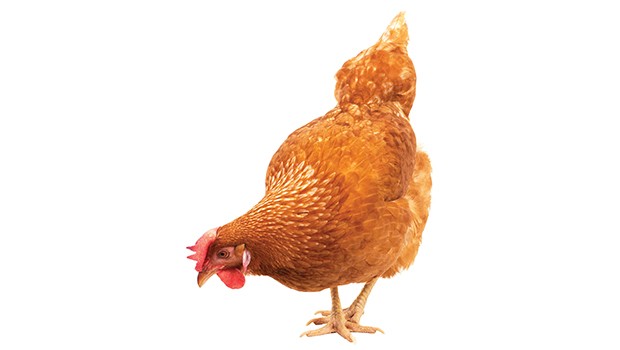URBAN CHICKENS
Coming Home to Roost
by Julie Peterson
Locavores with a hankering for fresh, organic eggs produced close to home have sparked a resurgence in backyard chicken keeping; even people that don’t like omelets are getting in on the trend. It turns out that the little descendants of dinosaurs make fascinating, low-maintenance pets.
“You can’t watch a chicken running across the yard and not have your mood lifted,” says Shana Cobin, who has owned chickens for four years. A veterinary staff member, she takes in rescues on her small farm in Foster, Rhode Island. Her current flock of eight chickens has room to forage with a turkey, some goats and sheep. At night, her birds sleep in a predator-proof chicken coop. As a vegan, Cobin gifts the eggs to others. “It’s gratifying to give eggs to friends and family who might otherwise buy eggs from factory farms,” says Cobin. “It’s as if I’m helping those hens, too.”
Those country chickens could be city chickens—if the municipality allows. An increasing number do, with a few rules. Roosters aren’t usually allowed (think crowing at 4 a.m.); the number of hens is limited; and they can’t roam the neighborhood. Local ordinances vary widely and change frequently, so be sure to get the facts for each area.
 Bird Benefits
Bird Benefits
Chickens are relatively simple and inexpensive to maintain. They come in a variety of sizes and colors, are easy to bond with and their entertainment value can’t be underrated. “You will enjoy watching them for hours,” says Andy G. Schneider, of Georgia, the national spokesperson for the Avian Health Program run by the Animal Plant Health and Inspection Service of the U.S. Department of Agriculture who has authored three books on chickens.
He says that keeping chickens is also a good way for children to learn responsibility and where their food comes from. He says, “They are living animals that depend on their owners and can live for 10 years or longer.”
Backyard flocks readily compost food waste and hunt insects to eat. Their nitrogen-rich droppings and old bedding from the coop can fertilize gardens, or the chickens can be let loose in garden areas to fertilize and weed at the same time. However, they will eat desirable plants,
so consider fencing off a fallow section of garden where they can prepare the ground for the next crop. Composting, fertilizing, weeding and pest control are benefits that even matronly hens that have slowed egg production still provide.
The miracle of producing an egg is a journey of its own. Rarely does a child— or grownup—squeal with as much glee as when the pet hen lays her first egg. Add the excitement of double-yolkers and tiny, yolkless “fairy eggs”, and collecting the hens’ bounty is a daily adventure.
Drawbacks
Like all pets, chickens need regular maintenance. They can get parasites such as mites or worms, or become sick. But the hardest thing about maintaining chickens is keeping them safe, according to Lisa Steele, a rural Maine farmer and author of 101 Chicken Keeping Hacks From Fresh Eggs Daily: Tips, Tricks, and Ideas for You and Your Hens.
“No matter where you live, there is something that wants to kill or eat your chickens. A secure coop and run or pen are important,” Steele says. The family dog, fox, coyotes, raccoons, owls and hawks are just some of the many potential predators.
If a rooster is in the flock, he instinctively protects hens from perceived danger—great for predators, but not necessarily a desirable pet. They crow louder, earlier and more often than most would expect. Unless eggs to hatch are wanted, no rooster is needed.
Starting a Flock
After selecting breeds, a new flock can be started with adult hens or chicks from a hatchery or breeder. Steele points out that it’s important to get chicks from a reputable breeder and start them off with good-quality feed, room to exercise, fresh air and clean water.
Coops can be built from plans or purchased. There is a trendy industry for palatial coops replete with window boxes, but the necessities include enough space for each chicken, roosting bars to sleep on, nesting boxes to lay eggs, good ventilation and predator-proofing. “The curtains, wallpaper and twinkle lights are fun, but not necessary,” says Steele.
Julie Peterson lives in rural Wisconsin with her husband, dogs and chickens. Contact her at JuliePeterson2222@gmail.com.












